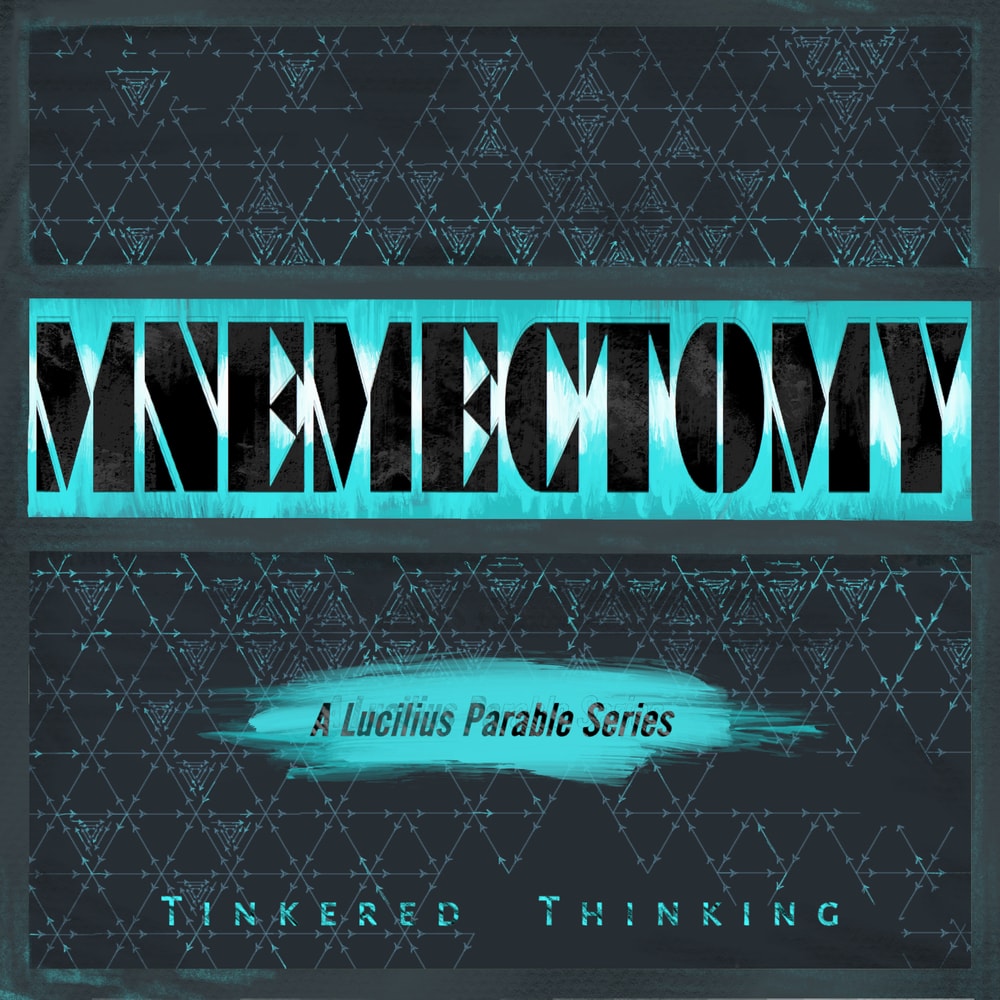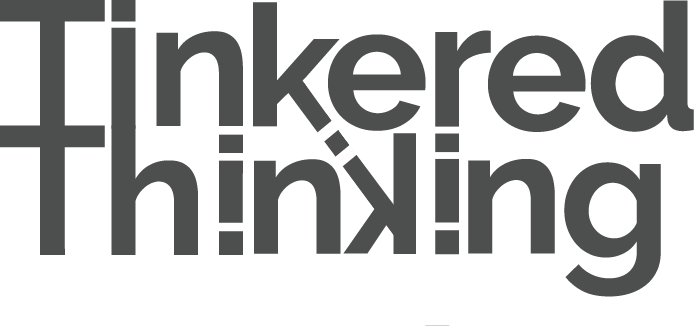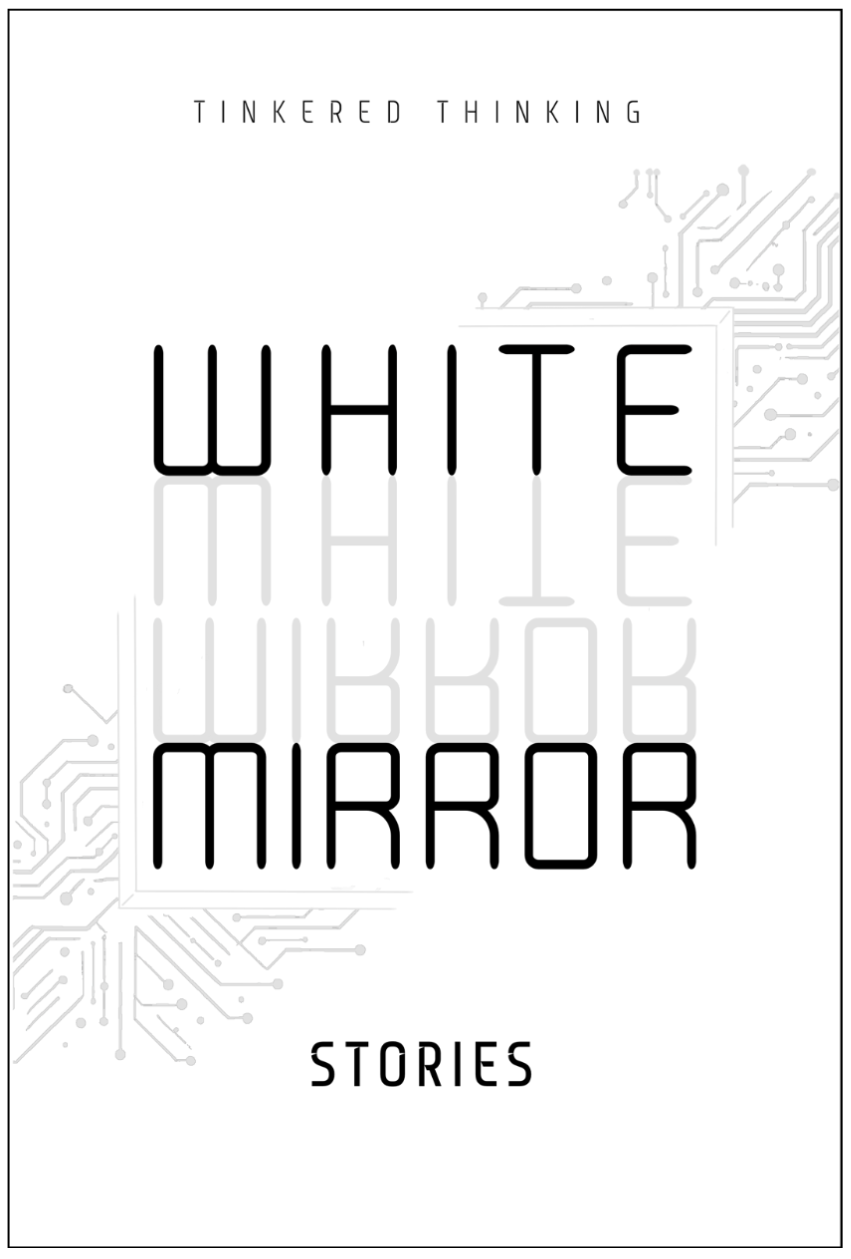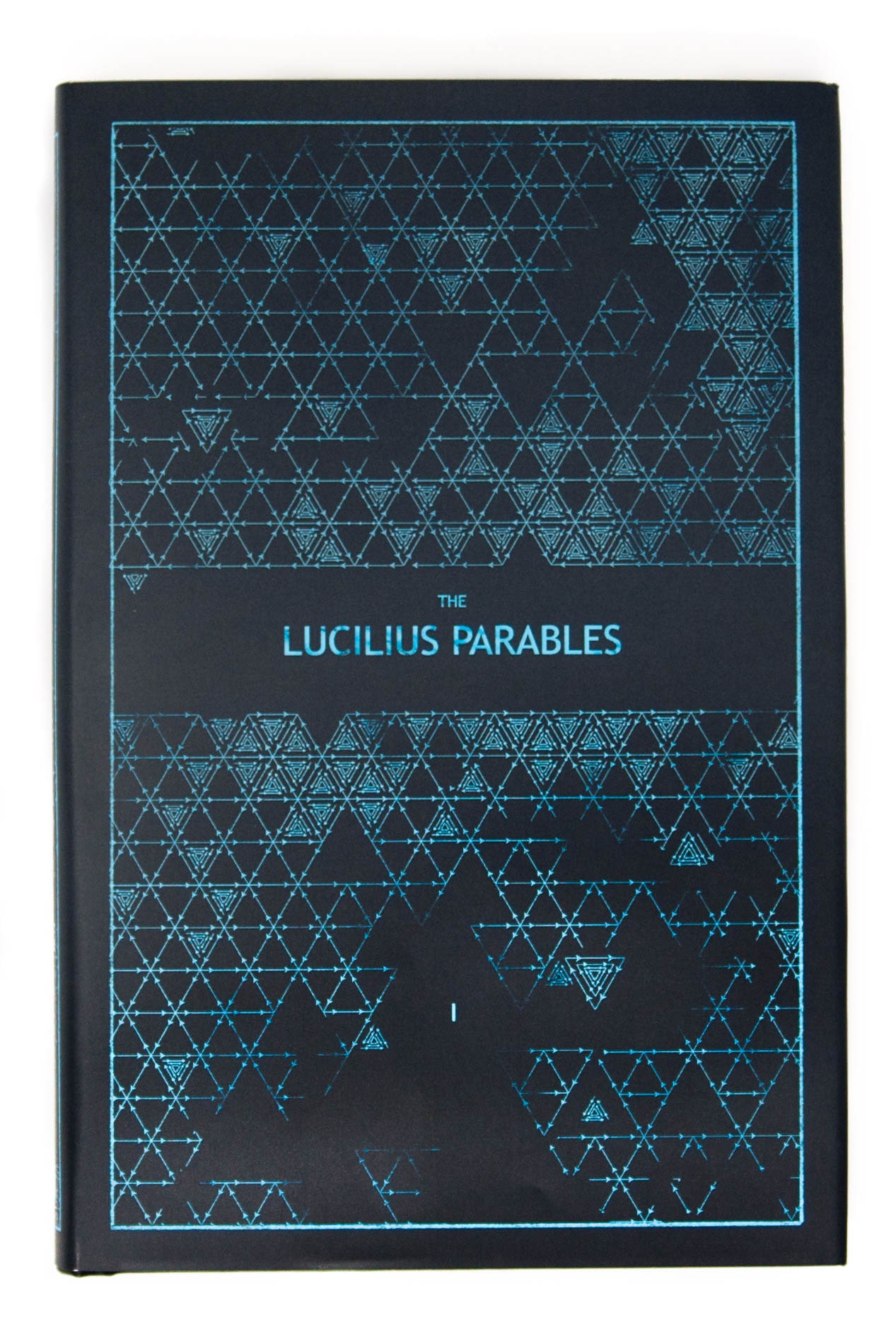Daily, snackable writings to spur changes in thinking.
Building a blueprint for a better brain by tinkering with the code.
subscribe
rss Feeds
SPIN CHESS
A Chess app from Tinkered Thinking featuring a variant of chess that bridges all skill levels!
REPAUSE
A meditation app is forthcoming. Stay Tuned.
MINIMUM VIABILITY FRACTAL
November 18th, 2022
Minimum Viability is fractal. It applies to everything I can think of, but the best way of introducing it is through the lens of the tech industry. The most celebrated incarnation of this concept is the Minimum Viable Product. This is at the heart of tech start-ups that seek to move fast, ship early and iterate. This little equation: ship early, fast and iterate, is touted as an effective recipe for success. Pre-launch, the aim is to build the minimum viable product - the simplest version of an idea that can be delivered to potential customers to test for product-market fit. All this means is - is the idea good? Can it make money? Are there actual real people who appreciate this idea?Once those questions are answered, the minimum viable product is either abandoned for a new one based on a different idea, or it is improved upon, iterated in response to user feedback and, ideally, turned into a stronger product.
However, the Minimum Viable Product is an expression of a fractal process. Meaning simply: the minimum viable product is an event that is produced by a cascade of similar smaller events that have the same phenotype.
Let’s rewind the process of a Minimum Viable Product particularly as it applies to tech. Where does it start? A programmer, naturally. But let’s go back even further. Where does a person start when the aim is to become a programmer?
This’ll likely make the most sense to programmers who have already got through this process, but I’ll do my best to try and make it excessiblef to the non-programmer…
Think about it. How would you begin to learn the art of programming? Or how did you begin learning?
There are a select few who can simply research, read and study without actually doing, form a fully informative picture, and then begin. But these people are not the norm - they are outliers and inso being, they don’t apply to the minimum viability fractal.
Generally a person seeking to break into programming will do a few courses, perhaps a Javascript course, perhaps a Python course, maybe C++ course. Whatever, it doesn’t matter. What ends up happening though is that these courses prove to be fairly useless. Sure some functions and class structures have been learned, but always at the end of such courses the question arises: what do I actually.. DO with all this stuff?
This approach vector is.. well I believe the technical term is ass-backwards. It is putting the cart ahead of the horse. It’s learning how to make cadmium paint without realizing it’s the sky you should be painting. Or put another way:
The only real way to learn programming is to try and build something. Some application, some idea, some tool or toy. Something you can dream up. This vision becomes the north star of one’s learning compass, and the process becomes much simpler, albeit a bit more challenging. Instead of the comfort of pursuing a 30 lesson course with a definitive beginning, process and end, the task is now radically different. The question is refined to this: what is the minimum viable action I can take to bring this vision to life? Perhaps a familiarity with some of the coding languages is helpful, but this can be done with some googling and reading some high level descriptions. That’s actually the main skill of a programmer: Googling. Because as Chris Pines one said: Programming isn’t about what you know, it’s about what you can figure out. And I don’t believe Pines meant this in an exclusively high-level way. He didn’t mean: you figure out how to code and then you know how to code. What I believe he meant is, coding is the process of continually figuring it out.
At least this has been my experience. The way to build a product is the same as the way to learn how to code: simply concentrate on figuring out the next smallest viable step required to make your idea come to life. This creates efficiency in multiple ways. Instead of arming one’s self with a broad set of techniques and knowledge, the majority of which is useless for getting started, a novice with programming can start hopping the stepping stones of building a product by learning only what is necessary for those steps.
Each step in the process is it’s own version of the minimum viable product. Each step is a minimum viable action. A good programmer is a good learner, and a good learner figures out how to search broadly, quickly in order to narrow down a set of possible solutions and paths to explore. This is precisely how the actual process of a programmer’s workflow looks like. A problem arises, and that problem is converted into a question. That question is googled and the most promising results are opened up in new tabs on the browser. The programmer than quickly clicks through those tabs, scrolls and scans, assessing for answers that seem to address the specific problem at hand most closely.
There is so much useful stuff out there to learn, but all of it must be regarded as noise. Yes, perhaps one day it will prove useful, but it will become so because it’s the solution to the topic and problem at hand. But at any given moment the signal of learning is dictated by what is needed to proceed with building the product. At each stage in the game the builder is searching for the fastest and most efficient way to make the current goal a functional reality. It doesn’t matter if it’s perfect so long as it works. If one day it breaks, or causes problems, then that is the day that further investigation is needed. Deep dives are only required when the functional solution is actually that deep. Otherwise, good enough is the name of the game. If it works, then that’s good enough to move on to the next step.
When enough of these steps are taken, a minimum viable product eventually emerges, and it’s launched. It’s emergence is a kind of phase change that is highly noticeable - something that emerges from the process already described, but the event itself is no different from the events that lead to it’s creation. The minimum viable product is the product of minimum viable steps in a process that extends beyond launch. Iteration is just another word for the same event described previously. Learning is the experience of iterating on knowledge that does or does not already exist. Product iteration is taking small viable steps to improve what does or does not already exist. That later part - product iteration is taking small viable steps to improve what does not already exist is the process taken before a product is launched. The former proceeds after launch. But there is not difference, Minimum viability is always the guiding force that pushes and pulls the compass needle. Minimum viability is at the heart of every tiny action, be it while building a feature, debugging, or designing. But it also represents the entire project at every stage of iteration. Each iteration ideally represents the next smallest viable step for the evolution of that project.
Fractal viability is defined by minimizing the distance between each step in the process. This is the equation for product development, but it’s also the equation for learning. Product development and learning are both additive in the same exact way. Countless tiny realizations eventually lead to functional knowledge and eventually expertise, just as countless tiny developments of a product eventually lead to minimum viable product and eventually to a monopolistic domination of a market niche if the same process of small iterative developments is continued.
At each level of resolution the equation for progress is the same:
Take the next smallest step.
FOG OF FRUSTRATION
November 17th, 2022
What is frustration and what does it look like? What’s it’s aim and it’s source?
Frustration is an anger that is born when something doesn’t work. You get frustrated when you can’t get the computer to do something. So, is it that you’re frustrated at the co outer? Or is the frustration directed at one’s self?
If this frustration is interpersonal, say, during a conversation, then there’s an additional problem. Even if the frustration is intended to be directed solely inward, at one’s self, the effect, or rather, the external appearance is one of anger. And in practice an angry person in conversation can easily be misconstrued as disrespecting, even rude, and such things can appear to be directed at the other person.
So where is the root of frustration? It’s quite clear what’s going on when angry at someone else. But frustration is a bit more diffuse. Frustration can be directed, just like anger.. or at least it can feel like that. I’m frustrated with the computer, for example. But where does the error lie that causes the disappointed expectation. In the case of not getting something like a computer to work, the cause is the user - it’s the frustrated person who simply lacks the knowledge and know-how to achieve the desired effect.
Frustration is inevitably an anger regarding a lack of agency. It’s a snap recognition of an ability absence - the ability to do something particular is absent.
Therefore, frustration occupies this strange Venn diagram in the world of emotions. It’s primary direction and source is inward, but externally it can be interpreted as an outward anger directed at some object or person. Frustration is a recognition of our current incompatibility with some detail of the world.
Similar to confusion, it is often a first step involved in learning. The real trick is to first realize that confusion, and even outright frustration can be turned into curiosity. It can be difficult. It can require a few slow breaths, but often it just requires: a good question about exactly what isn’t working.
THE UTILITY FUNCTION OF PSYCHEDELICS
November 16th, 2022
Someone sent me a lovely little message today containing a tweet which read:
My favorite LSD story is from this old Microsoft engineer who took a ridiculous amount of acid and found a way to open a windows xp control panel of his brain and turned off his fear of heights.
Talk about setting an intention. It’s an amusing image, but only because it sounds a bit like a joke. Imagine if you actually could open up a control panel for your mind and switch some settings around, just like that? It’s absurd, and a little funny, making it delightful. But the thing is it’s not a joke. This is (presumably) a reality that someone experienced and which had a lasting effect.
I sincerely believe this level of granular editing of the self’s systems is possible with psychedelics. Exactly how to create the necessary conditions and set the imaginative framework to reliably achieve this kind of result is, however, yet to be seen.
The unfortunate thing about psychedelics is that the people who would benefit the most don’t even entertain the idea. And those who engage with psychedelics regularly don’t seem particularly inclined to exploring the potential of systematic utility.
Thankfully Michael Pollan ripped off the stigma-band-aid a couple years ago with his book “How to Change Your Mind” and the scientific community is finally exploring the utility function of psychedelics once more. Albeit, very slowly.
Our human OS runs on stories woven from experience, and this is largely how psychedelics appears to affect a person post hoc. Juxtapose the out-of-this-world experience with the prescribed-medication experience. Which is bound to be the better story?
Prescribed medications mainly treat symptoms, or single underlying causes, and of course these have their place and utility. Psychedelics, on the other hand treat perspective.
Take for instance that story with the engineer and the fear of heights: how on earth would a pharmaceutical company try and tackle the concept of making a pill to treat “fear of heights” ? This is patently ridiculous. Being mainly psychological, which is still quite a mystery to the medical world, the task is practically absurd.
But psychedelics are a wholly different breed. It’s like taking a pill that temporarily blows apart the story you tell yourself about who you are and what life’s about. And in the absence of that usual story there’s a creative space and an experience from which a better story can be drawn and incorporated into the usual one, post hoc.
This is where “set and setting” are vitally under appreciated. Most psychedelic dabblers seem to expect an experience handed to them, and it’s perhaps due to this open-mindedness that trips can be either “good” or “bad.
But the utility function of psychedelics are likely contained in the pairing of such an experience with a creative and productive intention: ie. I want to explore the particular aspect of my psyche that is XYZ, or I want to work on resolving X feeling or Y concern, etc.
What then occurs is a wild experience, yes, but one with a theme. And given a theme, the human OS then starts to make powerful inferences about the experience in order to make sense of it in terms of a story, ie. The story we tell ourselves. This is how perspectives are edited.
It’s that old adage: walk a mile in someone else’s shoes to see what their life is like. Well, what psychedelics have on offer is just that, to temporarily become something that is not you. When that temporary exploration is over, you now incorporate the story of that experience into your perspective, and perspective can change drastically as a result.
That original story of the engineer with the fear of heights is excellent because we’ve all had the experience of trying to find a particular setting on some damn device in order to make something we use less annoying, or more enjoyable. So the logic of applying that same “story” to the human OS makes quite a lot of sense.
Sense, at least in terms of the logic of stories. This is the important thing to remember: we are NOT rational creatures, we are story-creatures. And if you want to change the future, we need to change the stories we tell. This doesn’t just apply in a larger cultural context, it also applies to a personal context: if you want to change who you are, you need to tell yourself a different story about who you are. The best way to change the story is to experience something radically different.
The experience is the fodder from which the story generates itself. This is why “routine” is such a drag. Without fresh and different experience-fodder, the story simplifies with repetition. And the neurological underpinnings of such a statement are also completely on point: There’s a collection of brain areas collectively referred to as the “Default Mode Network”, and to steamroll neurological nuance in the name of brevity, this network keeps the usual mental routine running. Psychedelics dial down the volume on this network. Way down.
In essence psychedelics enable a person to experience themselves without the usual repetitive thoughts and neurological habits. It’s a legit adventure, to its core, as it’s pretty much a foundational requirement that an adventure stars with a departure from the normal routine.
Circling back to intention, the question can be phrased more creatively: while the cement in my mind is temporarily turned to jelly, what changes do I want to make? What sort of thoughts, feelings, memories, fears and hopes need a little reorganization?
Given this framework, its obvious why those wedded to their routine are so uninterested in psychedelics (but would likely benefit the most), and why those dabbling “for fun” are perhaps wasting their time a bit:
It’s the difference between going to see a movie you know nothing about with a 50/50 chance you love it or hate it…. Or instead writing that movie and living through its events as you write them and as they rewrite you given a theme you wish to explore.
This is an example of something where a subtle tweak can have profound effects. At least in my experience and in my opinion. So, it may just be the story I tell myself about all this. But, I share it because that’s the thing about stories: you can use this story too.
UNSOLICITED ADVICE
November 15th, 2022
Who isn’t guilty of giving unsolicited advice? Certainly the wiser clue into the futility of this habit and learn the benefits of biting one’s tongue faster and more often than others.
But why the impulse in the first place?
I’ve certainly been very guilty of this, but I’m getting better. I’m very mindful when the urge pops up in my mind, and very deliberate to recognize when someone is genuinely asking for my perspective on what they should do. This can be a hard one: especially because venting can seem like a request for advice. Often it’s not, it’s just blowing off steam. All situations, whether they be venting or an internal urge can be properly cloistered with the right question: would you like my opinion on what I’d do in your situation? But be careful about those who will say ‘yes’ just to be polite. If this is the case and your honest opinion is something they don’t like, well, then perhaps it’s just better to simply wait until someone explicitly asks for advice.
The initial urge though has been on my mind lately. Why does it occur? And a possible explanation finally hit me.
Personally, I’m constantly tinkering with as many variables related to health as I can. Whether it be exercise, diet, supplements, altering gut health, mental training or breathing techniques, there’s little that I’m unwilling to try so long as there’s either a reasonable mechanism behind the practice or a compelling bit of anecdata.
A quick aside about “anecdata” which is a combo of anecdote + data, meaning: if someone is seeing amazing results, it’s probably too good to be true, but that doesn’t mean it shouldn’t be properly investigated! It’s been my experience that subtle tweaks CAN have profound effects, so while most things that seem too good to be true actually aren’t true, every once in a while one gets through the filter and it really is a subtle tweak with profound effects).
It’s this concept of anecdata combined with the woefully incomplete nature of science as it particularly relates to human health that lead me to a realization about what might be going on with this business of unsolicited advice.
It’s a replication desire. At least when it comes to myself and the unsolicited health advice I used to give family and friends. Because the science is so hazy and incomplete - or simply hasn’t been done, many of my own discoveries or hypothesis just don’t have much data behind them. But if I can get a family member or a friend to follow the same protocol and they do or don’t see similar results - well then that’s a way of verifying or falsifying my hypothesis. As a single individual I am an N-of-One, so it can be hard to tell what protocol is having which particular effect without strict isolation of protocols - something that is very inefficient simply because I’m ultimately looking for additive effects. If something works, I’m not going to cut it out in order to regress to a blank slate in order to test the effect of some other curiosity. But if I can get someone else to do the same protocol - someone with a different life and a different set of variables, and they end up having the same result? Well that’s a pretty robust signal.
Unfortunately, pretty much no one actually takes advice, especially unsolicited advice. So while it would be nice to use family and friends as guinea pigs to test our theories, whether they regard health, relationships, career, or whatever, it’s a pretty futile endeavor from start to finish.
C’est la vie.
FORTHCOMING MEDITATION APP
November 14th, 2022
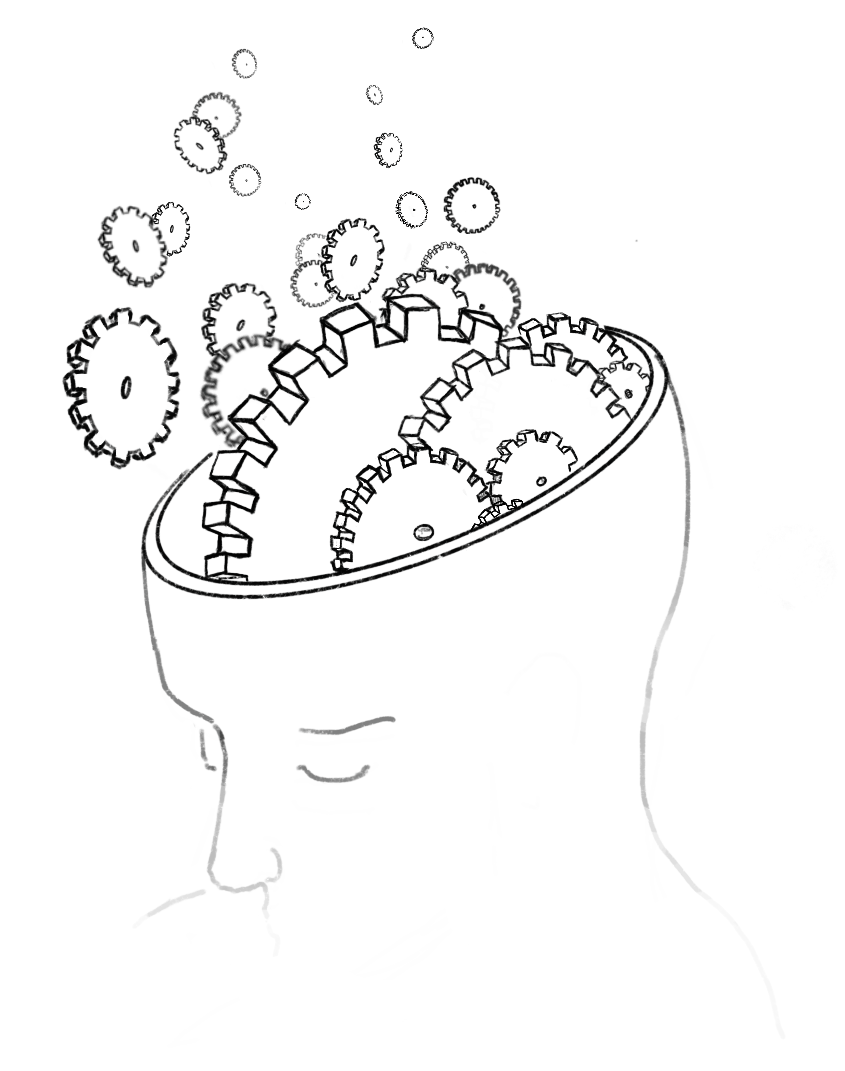
On Monday Tinkered Thinking releases a draft of a lesson from the forthcoming medtitation app, currently called The Tinkered Mind (If you can think of a better name, please reach out. I'm not crazy about the current one, but I'll be damned if I let an imperfect name keep me from developing a good idea.) The rationale here is simply to stave off project stagnation by taking a wish to work with words on a daily basis (Tinkered Thinking Posts) and combine it with adjacent projects. This also gives regular readers a chance to get a preview of what I'm cooking up and to get feedback before the app launches, which is a tactic that has proved extremely useful with other projects unrelated to Tinkered Thinking.
One further introductory note: The goal of this meditation app is predominantly aimed at helping individuals build a robust daily habit by breaking that habit down and tackling it's consitituent parts one at a time and aiding the process with a new and innovative way of tracking progress, the likes of which has not been seen in other meditation apps or habit tracking apps.
Again, if you have any feedback, please reach out via Twitter
Session 1: Introduction: Why Meditate?
Hello, and welcome to The Tinkered Mind, a meditation app from Tinkered Thinking. Just a quick note here at the beginning: for this session, there’s no need to sit with a particular posture or breathe in a certain way. All of that will be covered in future sessions. For now, with this introduction, just make sure you are comfortable and that you have the time and the space to concentrate on what will be said. And of course, feel free to listen to this introduction and any future session multiple times. There’s a great deal of benefit in repeated exposure since we almost always pick up on details we missed the first time, or details we’ve simply forgotten about.
Now when it comes to meditation apps, there’s quite a selection to choose from, and because of this it might seem like the issue has been settled, but all of the apps out there seemed to fail on one key issue - a subtle issue, but a profound one on the grounds of whether someone sticks with the practice, long term, or not. Perhaps this is your first exposure to meditation, or perhaps you’ve tried it before in a touch-and-go sort of way. Doesn’t matter: you’re in the right spot, and I’m going to be totally transparent about the strategy designed into this program, and why it’s compelling and hopefully, effective.
The reason why it’s so important for a person to stick with the practice on a daily basis long term, and why this app is geared toward that very aim is because the fruits of meditation are slow to arise. Yes, studies have been done that show that people can achieve impressive amounts of stress reduction with just a few sessions, but it takes at least three to four months for changes to register on an MRI brain scan, and there’s a decent chance that these early reductions in stress are due to deliberate changes in breathing more than anything having to do with a mental exercise. And beyond that, the two year mark seems to usher in a very subtle but profound shift in one’s experience. So while the possibility of stress reduction in the short and long term is certainly a good thing, and part of the aim, it’s not the whole story, there’s an entirely different experience of our daily life that we are seeking to unlock and explore here, and the mental training required takes time.
There’s a witticism attributed to Einstein who apparently said “Insanity is doing the same thing over and over and expecting different results.” It’s embedded into our culture as a part of common sense, and may even contribute to our likelihood to give up on something new when it doesn’t immediately yield the results we want. Einstein’s statement makes perfect sense in the realm of physics, but not in the world of learning where different results often pop up after many attempts that at least feel like doing the same thing over and over. Riding a bike for example, or ice skating. After enough falls, suddenly we seem to find our balance and finally glide forward.
Meditation is no different. In the beginning it can seem like a constant state of failure - being asked to do the same thing over and over and getting frustrated with an apparent inability to do it. In the case of meditation, however, the ability to even recognize that failure is a sign of progress - a true success. But… we’ll get to that.
The larger point is how important it is to stick with a meditation practice. And what most if not all meditation programs seem to miss is that a meditation practice is not a single habit that we install in our life. It’s actually a collection of smaller habits, and the curiosity behind this app is contained within this question: what if we tackle one habit at a time? Would that make it easier for people to stick with the practice long term?
Asking someone to carve out 10 minutes from their day and sit in a certain way and breath a certain way and try to make their mind do a trick is a lot to ask from someone who is busy, stressed and maybe doesn’t clearly understand the rationale behind all of these details of the practice.
This app deconstructs that situation. For example this first session that you’re listening to has required only that you take the time to listen to it, which is as easy as listening to a podcast and can be done while doing other things. The other pieces will be introduced systematically in time, with the idea that we gradually add details with fully explained reasons over the course of days as opposed to all at once with little to no rationale. The first habit we need to build is the habit of simply committing the time needed for the practice, and if you finished listening to this first session then you will have made the most important step required to establish that small habit. Tomorrow we’ll address the topic of sitting, and the following day we’ll talk about breathing, and eventually we’ll get to the issue of what can be done with the mind, and how to go about it. But by the time we get there we will already have some behavioral momentum when it comes to the underlying habits that support this mental training. We’ll delve more into the philosophy and logic of this strategy in upcoming sessions.
The next lesson will unlock tomorrow, and if you miss days, and you have your progress set to “Run Streak” in your settings then it will naturally go to zero. By default it is set to the new Momentum Score which is a concept we will cover in more detail later.
With lessons, if days are missed, unlocked lessons will begin to lock back up, but gradually and in proportion to the amount of time missed. So especially in the beginning, do try to stick with it. Again more of the logic of this system will be covered when we talk about the Momentum Score.
In the mean time, the short of it is to try and a daily discipline without making a you feel completely demoralized if you miss a day. Life is hectic and messy, and because of that adopting a new habit IS particularly tricky, so some wiggle room has been very deliberately built in to the app. But miss enough time, and naturally everything resets to zero.
And of course , In addition to these lessons, the silent timer is always available to dedicate extra time to developing a practice and playing around with the ideas we’ll cover.
The silent timer also maintains access to lessons. If, for example you don’t feel like doing a lesson, or if you only have a minute or two to sit down and it’s not enough time for a full lesson, a session with the timer will keep the momentum score or the run streak going and ensure that access to lessons stays the same.
As a parting note, there’s one idea I’d like you to take with you as you go about the rest of your day: why do you want to meditate? What’s the reason you find yourself now listening to this particular lesson on this app?
The reasons can be quite diverse. Some people are here to reduce stress. Others are maybe overwhelmed by their own minds. Maybe some have been urged by family or friends, or a therapist has recommended meditation. Perhaps you have issues with anger and you’ve been told that meditation helps with this.
Regardless of your specific answer to the question, it almost certainly falls into one category in particular along with all the other possible reasons. And that’s a sense of compassion that you have, for yourself.
Even if it’s mere curiosity, it’s curiosity fueled by a desire give yourself the freedom to explore. And if it’s at the urging of people in your life, despite your reluctance and disbelief, there’s still the issue that you’re willing to try something new on the chance that it will improve YOUR relationships, if only to be able to tell those people that you’re trying it out.
The fruits of meditation are many, but even getting to the starting line is a gift in itself. It’s a small proof that you care about the person you are, and you’re willing to put in the work to make tomorrow a little bit better for that person.
-compressed.jpg)
